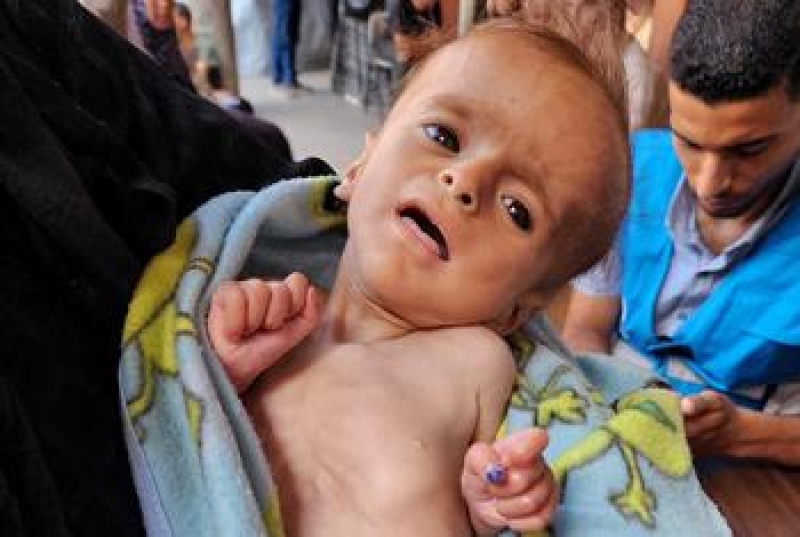- Trump considering military options on Greenland; Europe rejects |
- Fertiliser crunch threatens Kushtia’s onion boom despite high prices |
- Security Council Divided on United States' Venezuela Action |
- Over 1.53m voters register for postal balloting: Shafiqul Alam |
Gaza Malnutrition Crisis: UNRWA Pleads for Urgent Action

Salam, six months old, is screened for malnutrition at an UNRWA medical point in Gaza City.
The ongoing 21-month-long war in Gaza has resulted in over 58,000 deaths and 100,000 injuries as Israeli attacks continue amid a growing number of child deaths from malnutrition. In recent weeks, UN agencies have recorded nearly 900 deaths of desperate and hungry Gazans attempting to collect food—many at private aid hubs run by the so-called Gaza Humanitarian Foundation (GHF).
Juliette Touma, Director of Communications for the UN agency for Palestine refugees (UNRWA), has visited Gaza multiple times and reflected on the children she met there and in other war zones.
“Adam has been on my mind lately, more than usual.
I met Adam years ago in the Yemeni port city of Hudaydah, then under siege and bombardment. In a poor hospital ward, 10-year-old Adam lay weighing just over 10 kilograms. He couldn’t speak or cry—only make a hoarse breathing sound. A few days later, Adam died of malnutrition.”
Deadly Malnutrition Across Conflicts
Years earlier, a colleague from Syria called late one night in tears. She shared that 16-year-old Ali had died of malnutrition. He lived in yet another besieged town, trapped in a war he had no part in.
“My supervisor, an epidemiologist, said, ‘For a boy of 16 to die of malnutrition—it means there is no food at all.’”
In Yemen’s capital, Sana’a, during a cholera outbreak, Touma visited a children's hospital and saw 15- and 16-year-old boys so malnourished they could barely move in bed.
These scenes haunted her and many other humanitarian workers over the years.
Fatal Hunger Grows in Gaza
In 2022, Gaza was already under blockade for over 15 years. Still, food was available in markets through Israeli imports and local farming. UNRWA supported over one million people with food aid. Children in schools were healthy and joyful.
But recently, disturbing images began to arrive—emaciated babies, including seven-month-old Ahlam. Her family has been displaced monthly since the war began. Traumatized, weakened, and severely malnourished, Ahlam’s immune system is failing due to displacement, lack of clean water, poor hygiene, and food scarcity.
According to the WHO, over 50 children have died from malnutrition since the siege began on 2 March. UNRWA has screened more than 242,000 children—half of Gaza's under-five population. One in ten is malnourished.
“Ahlam can survive. But will she?”
Bombs and No Supplies
Gaza is critically short of therapeutic supplies. The Israeli siege blocks food, medicines, and even soap. Despite occasional easing, UNRWA has not been allowed to deliver aid since 2 March.
Last week, another infant, Salam, died from malnutrition. She reached an UNRWA clinic too late.
In another tragedy, eight children waiting for malnutrition treatment were killed when Israeli forces struck the clinic. A colleague described mothers standing in silent grief, much like Adam once did.
A Preventable Tragedy
“How many more babies must die before the world takes action?” Touma asks.
“Why should children die of malnutrition in the 21st century—when it’s preventable?”
UNRWA has over 6,000 trucks of aid waiting outside Gaza and more than 1,000 health workers ready to deliver life-saving care.
“How many more Ahlams and Salams must die before we act?
When will a ceasefire come to stop bombs from falling on emaciated children?”

